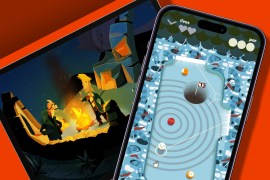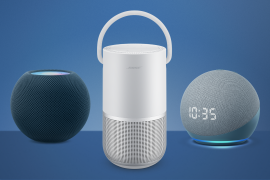Stuff meets… Nest founder and father of the iPod, Tony Fadell
We spoke about the early days of Apple and Nest and how doing stuff wrong leads to success

Tony Fadell began his career in General Magic, before becoming CTO of Philips and then an early Apple employee. He’s best known for his work as the father of the iPod, and for developing the iPhone. He later went on to found smart home company Nest. Most recently he released Build: An Unorthodox Guide to Making Things Worth Making, an “advice encyclopedia” packed with 30+ years of Silicon Valley knowledge.
We caught up with him to hear about the early days at Apple and Nest, what goes into making products, how failures can lead to the biggest successes, and how consumer tech has changed over his time in the industry.
The iPod’s success was not guaranteed at all, as it was so different for Apple. You have to remember that Apple was a very different company at that time – it was struggling (that’s a nice way of putting it). The company Apple is today is very, very different from in 2001. Remember, iPod didn’t take off. It was somewhat of a success for the few Mac lovers, but the success didn’t really come until the third generation of iPod. Support for Windows came in the third generation, increasing the number of customers that could consider buying one.

If you try to do something and you don’t fail, you’re not trying hard enough, or you’re not paying attention. If you look at Steve [Jobs], 70% of his decisions were failures. But then the 30% that succeeded were so big that they covered up the failures. You have to keep trying, just like learning to walk. To know to keep pushing on, you get really good signals from people using the product. Feedback from the market helps you progress with version two, and that iteration can snowball into pushing forwards. Nobody gets everything right with version one, no-one.

The pain of not being able to control my thermostat and have it save money was the biggest driving factor in starting Nest. Nobody was innovating, and it [thermostats] was stagnant for years, there was lots of new technology around, so it was just right for disruption. I didn’t even have to compete with any ugly thermostat competitors. At some point, it transitioned from “this is interesting” to “how can I not do this?” And when people saw it come out, they went, “duh, of course!” Coming up with the idea first is the trick, and then you have to take the risks (everything outside of making the product was out of my domain).
You build on top of your experience. When doing your thing for the first time, you’ve got no experience to work from. But as you go through life, you know 60-80% about what you’re doing. With each product being very different, building upon this experience while building products offers some familiarity. And with each new product, you’re learning things you never knew, while bringing this experience with you. That’s why Nest worked, it brought together all of that experience in a way that was transformative.
Most entrepreneurs are not successful until they’ve got 15-20 years of failure under their belt. That’s what it takes, this stuff is really hard. When people say “I’m a brilliant entrepreneur” when they’re 24: yeah, right. There might be some geniuses out there, but for the most part, this is really hard stuff. At Philips, we had the “green lighting process for entrepreneurial ideas”, trying to create a process for entrepreneurialism. But, it’s an oxymoron. These things come from all different experiences, there’s no set of instructions to follow. Build is what I call a guide for building products, but that includes lessons from my experience, no sets of instructions.
When it comes to design, I was just building what I thought was right, using experiences from previous products. In the case of Nest, the dial wasn’t trying to mirror the scroll wheel from iPod. It just made sense – all you need to do is turn the temperature up and down. When you look in cars and see all the dials moved to a touchscreen, it makes you realise some things are just better as a dial. Let’s make sure we focus on that core functionality, and make it beautiful and work really well. Focusing on how people interact with a product is key. The Nest app carries the dial concept in the software rather than arrows, to help it feel like the device in the real world. It all really is connected, but often times makers don’t end up taking the time to pay attention to this. But when you do, customers really feel it, they think, “this is how it should be”, which is something I explore in Build.

The next big thing, to me, is climate. That’s lots and lots of different elements combined. A lot of infrastructure needs to happen for us to continue to be able to have these gadgets we all love in 50-100 years from now. There’s a lot to be said for fixing this infrastructure. One example is using Thread/Matter (which all actually started at Nest, and we had to defend) for energy conservation in the home. It’s not just the boring, corporate stuff, a lot of it is really interesting for homeowners. It’ll be fascinating to see over the next 3-5 years true, resilient networks to work on energy conservation.
In my pocket, I have the iPhone 12 – not the latest because I don’t need the latest. That’s another thing for me, making sure not to over-consume. Just because companies say they have the latest technology, doesn’t mean I need the latest. I also have my lip balm, and a product I can’t tell you about. It’s one of mine. I think we’ll [Tony and I] really want to talk about it. But that’s later, I can’t say anything about that yet. For now, I just want to get Build out there to all the builders, to inspire the next generation of products.
Tony Fadell has just released his book, Build, and is currently investing in climate-bettering tech at his firm Future Shape.


